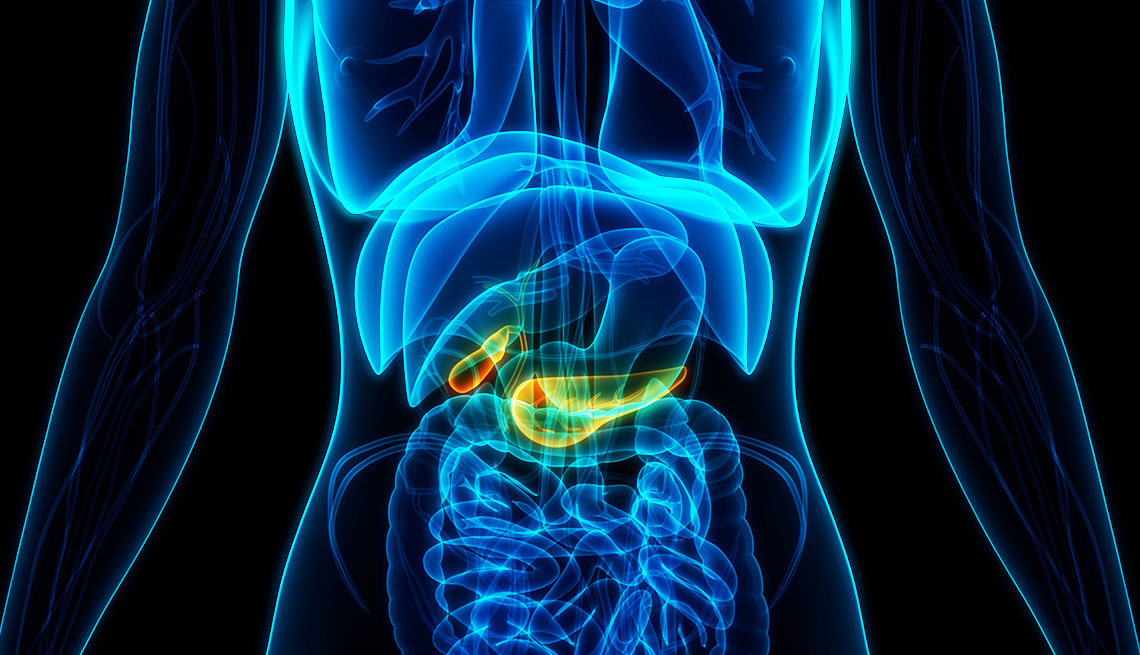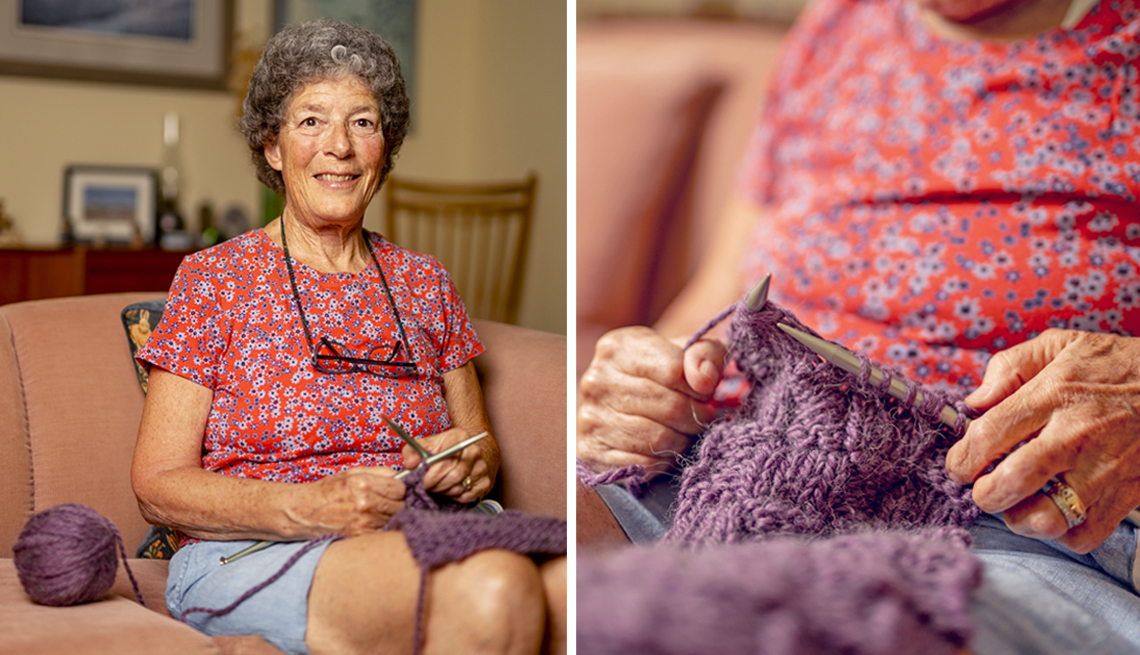Staying Fit
Twenty years ago, getting a pancreatic cancer diagnosis was very often devastating. The cancer usually wasn’t caught until later stages, partly because the pancreas is tucked behind the stomach, making it hard to detect tumors. Plus, many of the warning signs — abdominal discomfort, back pain, unintended weight loss and fatigue — are easy to overlook or write off as something else entirely. And they often arise late in the game.
Today, however, the five-year survival rate for pancreatic cancer has more than doubled from where it was two decades ago. And if the disease is caught early and the tumor is small and confined to the pancreas, the survival rate is around 44 percent, according to the American Cancer Society (ACS).


AARP Membership— $12 for your first year when you sign up for Automatic Renewal
Get instant access to members-only products and hundreds of discounts, a free second membership, and a subscription to AARP the Magazine.
A surge in research funding is partly responsible for this good news. With stronger support, pancreatic cancer research is making huge advances. Scientists are developing new ways to screen for the cancer so that it can be caught earlier, and they are designing new drugs and procedures to help treat it.
Shubham Pant, M.D., associate professor in the Department of Gastrointestinal Medical Oncology at the MD Anderson Cancer Center in Houston, is hopeful that some of these breakthrough treatments will help to “double the rate of survival in the next five years.”
Advances in detection and treatment
The great promise of targeted therapy
8 Warning Signs of Pancreatic Cancer
Treatment is more likely to be effective the sooner the cancer is caught.
- Abdominal discomfort in the mid- to- upper abdomen that often radiates to the back
- New onset diabetes or worsening blood sugar levels, especially with weight loss
- Darkening of urine and lightening of stool
- Jaundice (yellowing of the skin and whites of the eyes)
- Itching
- Nausea and vomiting
- Fatigue
- Loss of appetite and unintentional weight loss
Up to 25 percent of pancreatic cancer patients have unique molecular alterations in their tumors. Now researchers can study these differences using technologies such as molecular profiling, which allows doctors to target treatments individually. A large study published in 2020 in The Lancet Oncology found that pancreatic cancer patients who received tailored drug therapy based on their tumor’s unique characteristics lived an average of one year longer than those who did not receive targeted therapy.
In 2018, a year after being diagnosed with pancreatic cancer, Karen Kiernan, a retired nurse from Naperville, Illinois, received such a targeted therapy with Keytruda (pembrolizumab), a drug approved for treating lung and other cancers. By then, Kiernan had severe back pain from her cancer and had lost 40 pounds. But once she began taking Keytruda, she was able to regain some weight and return to doing the things she did before she had cancer. Her recovery hasn’t been without the occasional bump, but Kiernan told AARP in 2022 that she is “truly in remission now.”
“I think we are starting to see more progress and traction in testing every pancreatic cancer patient’s tumor,” says Michael Pishvaian, M.D., director of the Gastrointestinal, Developmental Therapeutics and Clinical Research Programs at the Johns Hopkins Kimmel Cancer Center. He estimates that more than half of all pancreatic cancer patients are now having their tumors tested.
“This is definitely something patients can take some measure of control over. They should generally feel more comfortable and be more aggressive in asking their doctor for this,” Pishvaian says.
Using the breast cancer drug Lynparza
Mary Phillips was diagnosed with metastatic pancreatic cancer in March 2016. At first she took the latest combination chemotherapy for pancreatic cancer. Then she enrolled in a clinical trial for the drug Lynparza (olaparib). Because the medication was already being used by some patients with breast or ovarian cancer (those with a mutation in their BRCA or DNA repairing genes), researchers thought that it could be useful for pancreatic cancer patients with the same mutations.
Early findings in this area have been promising. A 2019 study, published in The New England Journal of Medicine, reported that patients with such a BRCA mutation who took Lynparza for metastatic pancreatic cancer had no new tumor growth, and no spread of their cancer, for twice as many months as those not receiving the drug. Still, there was no difference in long-term survival past 18 months. In December 2019, the Food and Drug Administration approved the medication for maintenance therapy for this group of patients.
Phillips shared some advice for others after her experience with the disease: “Do everything you can and know that you tried everything. … You’ve got to stay alive until the next best thing comes along.”











































































More on Health
6 Things Women Wish Their Doctors Told Them About Turning 50
Here are some of the big changes you should expect and what you can do about each oneWhat are Dense Breasts?
Here’s what you need to know about a common issue among women
Do You Know the Warning Signs of Lung Cancer?
The most common symptoms are often easily overlooked or misdiagnosed